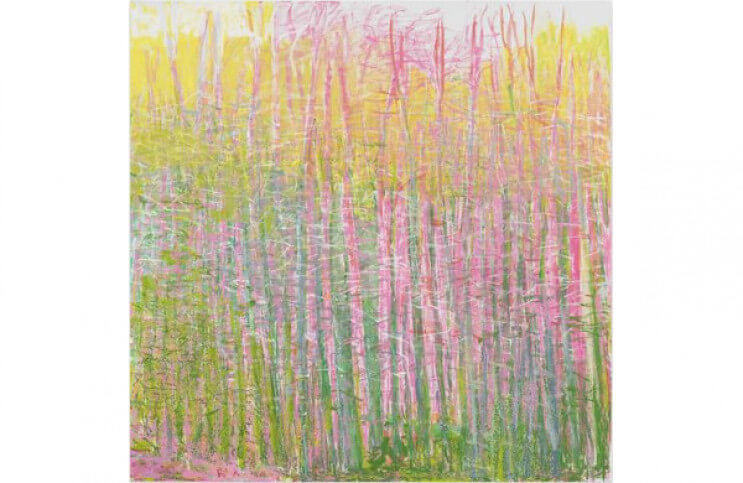
True Nature of Wolf Kahn Art
Two observations have often been made about the paintings of Wolf Kahn. First, it has frequently been mentioned that Kahn paints landscapes that reference the scenery around his homes in Vermont and New York. Second, much has been made of the question of what position his oeuvre occupies on the sliding scale between representation and abstraction. What is strange about both of these points is that neither says much about the paintings. Neither addresses their radiance and power or the intelligence of their compositions. The Modernist painter and educator Hans Hofmann once said, “There is no such thing as representational painting and abstract painting: there is only intelligent painting and stupid painting.” Kahn was a student and later studio assistant of Hofmann. He has mentioned that quote in interviews before, and implied that he agrees with it. So why should we discus whether Kahn is a landscape painter, a representational painter or an abstract painter? The important thing is that Kahn is an intelligent painter. There are many ways we can enjoy his work that have less to do with the landscapes in its imagery, and more to do with the intelligent landscape of its ideas.
Color and Light
Color makes us aware of light, and without light we could not know color. If color is what you find precious it makes sense to look for it in nature, since that is where you are apt to find the most interesting, most beautiful, and most radiant light. Although the imagery in his paintings references nature, what Wolf Kahn is really painting when he paints these images of the natural world is color and light. If we look at his landscapes not as paintings of nature, but as paintings of color and light, we can comprehend them from a different, more universal perspective.
Nature is communicative of color. Nature is the place where light interacts with the elements in an unrestricted, unexpected manner. These paintings begin in nature, but they do not show us it; they show us the heart of color, the power of light, and the fleeting moment when those two elements intersect. They capture the ethereal, passing moments of sharp color that flash so briefly across the leaves, the sky or the water, and preserve it in the perfect light for our eyes.
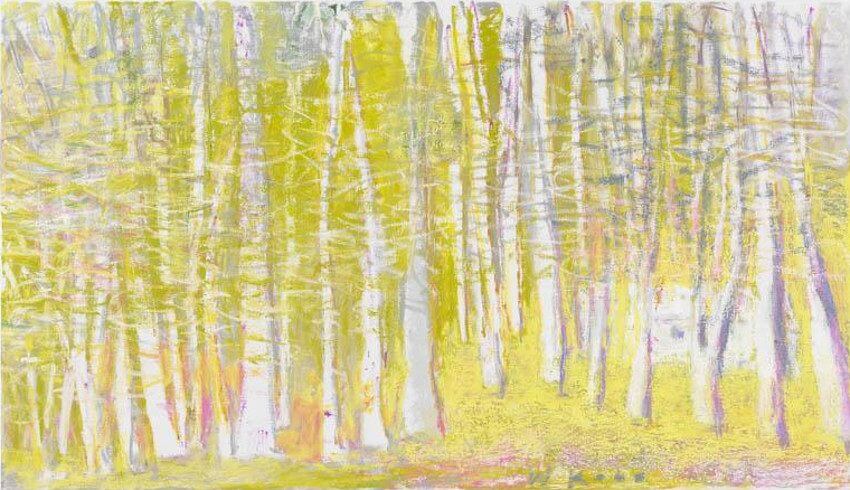 Wolf Kahn - Hidden Greenhouse, 2015, oil on canvas. © Wolf Kahn
Wolf Kahn - Hidden Greenhouse, 2015, oil on canvas. © Wolf Kahn
The True Medium
When we see a particular color it is natural to recall feelings related to the experiences we have had with that color in the past. Some color theorists propose that there are also universal emotional reactions caused by various colors. But even if that is not true, we still each have our empirical, personal relationships with colors. If we look at the works of Wolf Kahn from the point of view of his personal relationships with color, could we read them as not paintings of nature, but rather paintings of feelings?
Kahn once said, “Nature and the artist’s feelings are merely the raw materials.” This quote could mean that in the same way that nature is not the subject of his paintings, feelings are also not the subject. But it is interesting to describe them as the raw materials. Usually paint and canvas would be considered the raw materials for a painting. If nature and feelings are the raw materials, how should we perceive of the paint and the surface? Are these physical elements the true subject of the work? Or are they only incidental supports, working in service to the real subjects, color and light?
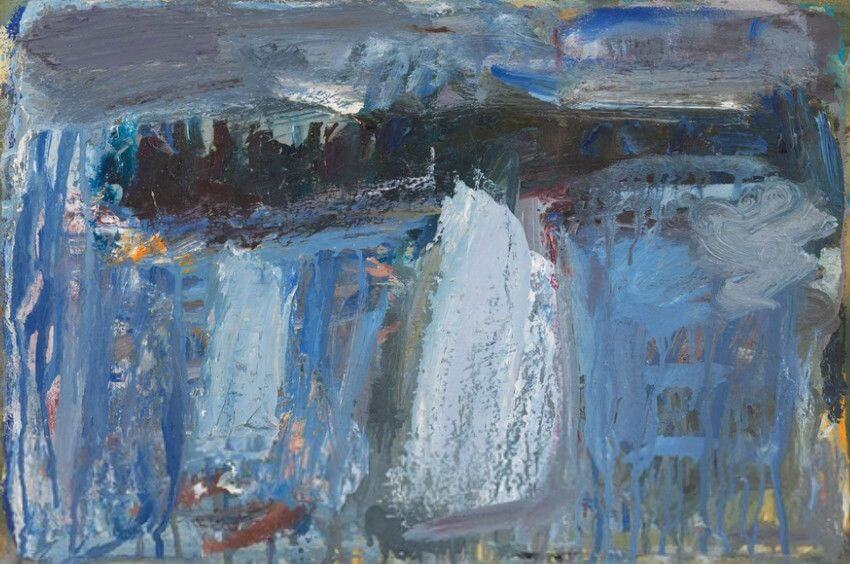 Wolf Kahn - Sails Near Sprucehead Maine, ca- 1962, oil on panel. © Wolf Kahn
Wolf Kahn - Sails Near Sprucehead Maine, ca- 1962, oil on panel. © Wolf Kahn
Ideas of Brilliance
An idea Kahn has spoken about frequently is radiance. In order to achieve what he considers to be the maximum amount of radiance, he collaborated with a friend who is a paint manufacturer to create a line of super radiant paint hues. He uses them because they offer a superior reflective quality to the surfaces of his works. The brilliant surfaces he creates with them seem to glow. But what is really meant by radiance? Radiance is not light or color, but it is a quality of both.
In addition to light, the word radiance is also often used in terms of heat, especially in terms of radiation, as in particles being emitted off of the surfaces of something. But the definition of the word could be more broadly interpreted to include anything that emanates from something else. Charismatic people are said to have radiant personalities. Happy people have radiant smiles. Danger can radiate from a scary place. Maybe color and light are not the true subjects Kahn is working with. Maybe the subject is radiance, and the less precise qualities that emanate from color and light.
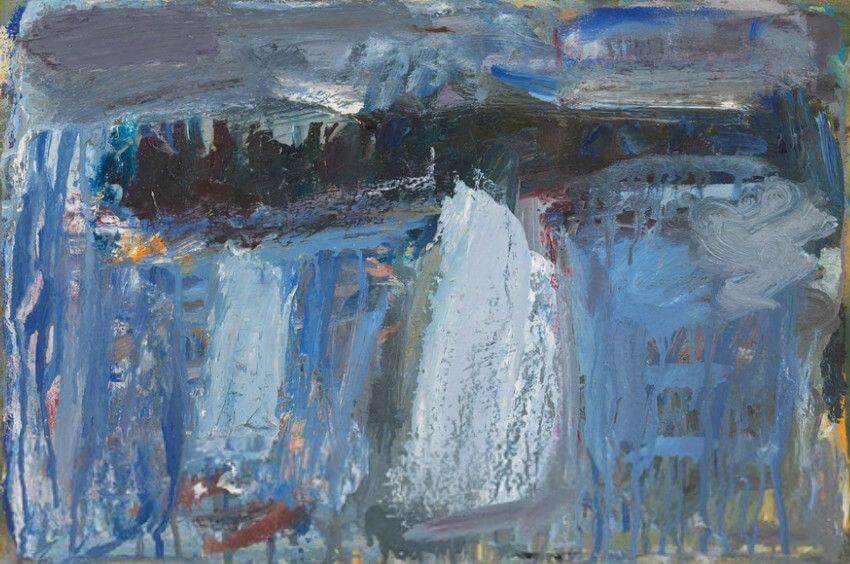 Wolf Kahn - Orange Barn, Half Hidden, 2016. © Wolf Kahn
Wolf Kahn - Orange Barn, Half Hidden, 2016. © Wolf Kahn
Landscapes of Ideas
Though he may not only be painting landscapes, Kahn definitely draws on the compositional qualities landscapes suggest. And he frequently gives his paintings titles that seem to refer to specific landscapes, such as Blue Horizon, or Our Northern View. Such works include horizon lines, and use light and dark areas to communicate the idea of “push and pull,” a technique taught by Hans Hofmann in order to convey perspective.
But if these are not literal landscapes, what is the idea of a landscape to which they speak? A landscape refers to what is visible. It could mean the physical topography of land, or the mental topography of a problem. Is the blue horizon where the land meets the sky, or where emotion meets the moment? Is our northern view a literal scene of what awaits us to the north, or the darkness of mystery awaiting us in the unknown future?
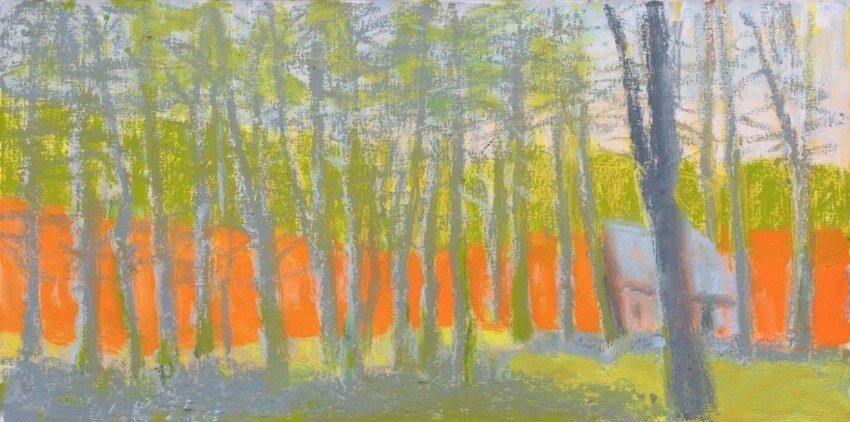 Wolf Kahn - Bright Orange, Pale Yellow, and Gray, 2014, oil on canvas. © Wolf Kahn
Wolf Kahn - Bright Orange, Pale Yellow, and Gray, 2014, oil on canvas. © Wolf Kahn
Representing Abstraction
Despite sounding authoritative, what did that statement by Hofmann, that, “There is no such thing as representational painting and abstract painting,” really mean? How should fans of abstraction, or for that matter fans of realism, respond to the idea what they love does not exist? Is there more to it than that? One of the difficult things about defining abstract art is that definitions are too precise. Calling an artwork representational or abstract limits its potential. If we look at Wolf Kahn works as representational, we may fail to consider the depth of contemplative possibilities they could evoke in us. If we look at them as abstractions, we may miss out on the simple, direct pleasure of admiring their beauty.
When Hofmann made that statement, he tapped into a concern that many painters understand. That concern is that as soon as an image is painted, it exists in a concrete way. That means every image, no matter how unbound to reality, is eventually representational, even if only of itself. But even the most realistic painting is also an illusion, because it is only a picture. Hofmann put the importance therefore on intelligence, because what makes a painting intelligent is the same as what makes a person intelligent: the presence of ideas. We perhaps cannot describe definitively the true subject, the true meaning, or the true nature of the paintings of Wolf Kahn. But we can say they are intelligent, because they overflow with and inspire a rich, vibrant, and beautiful landscape of ideas.
 Wolf Kahn - Bright Ground, 2012, oil on canvas (Left) / Horticulture, 2012, oil on canvas (Right). © Wolf Kahn
Wolf Kahn - Bright Ground, 2012, oil on canvas (Left) / Horticulture, 2012, oil on canvas (Right). © Wolf Kahn
Featured image: Wolf Kahn - Surprising Green, 2014, oil on canvas. © Wolf Kahn
All images used for illustrative purposes only
By Phillip Barcio






